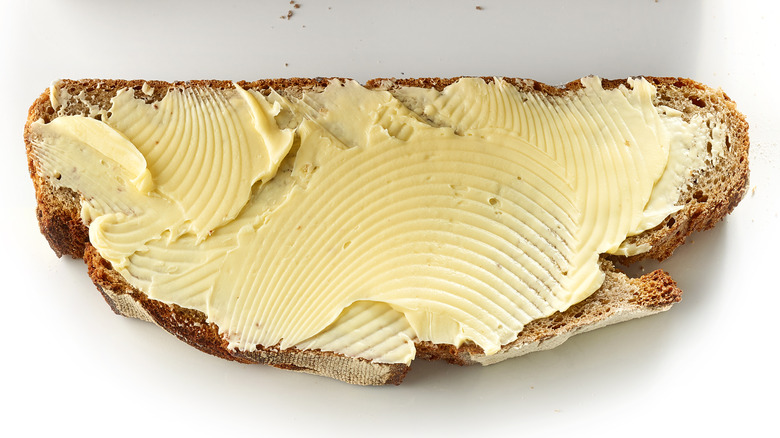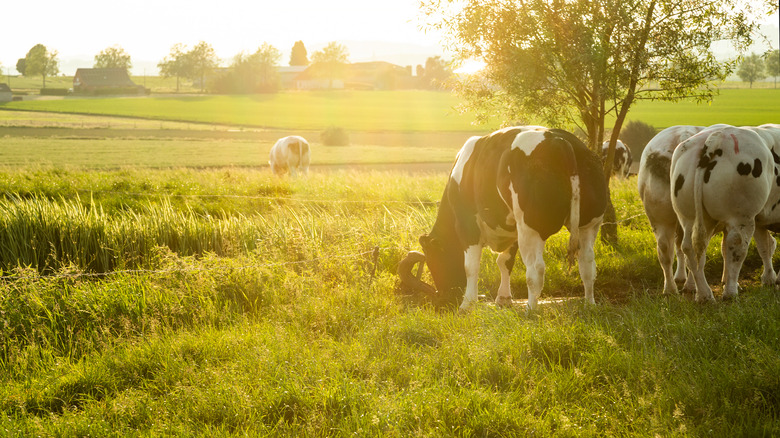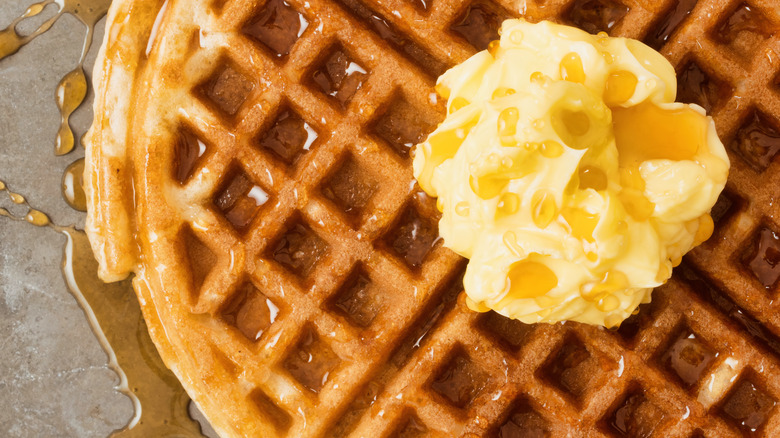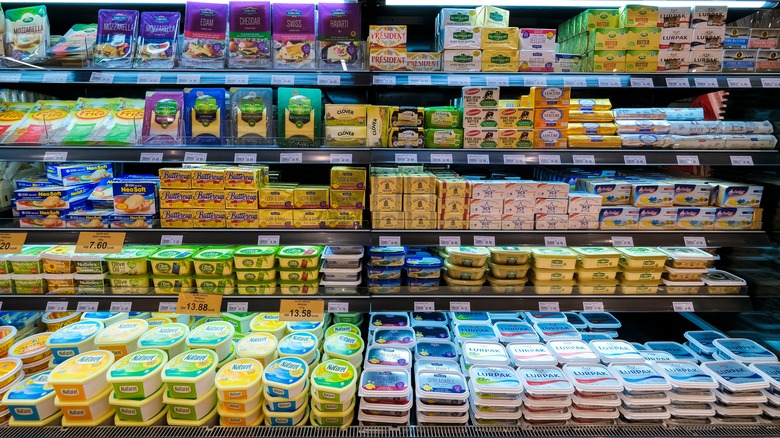Ultra-Savory Belgian Butter Should Have A Moment In Your Kitchen
We may receive a commission on purchases made from links.
There is something different about European butter. Anyone who's eaten slices of baguette in France or Pugliese bread in Italy in the morning slathered with butter can tell you that the American equivalent is totally different. European butter has a sweetness, a subtle tang, and a rich, creamy texture that has no equal. The international butter that most Americans are likely familiar with is Irish butter, due in large part to the widespread availability of Kerrygold.
More and more markets with a large selection of global products are now offering butters from other countries as well like England, Italy, and Belgium. Yes, the spirited country better known for its beer, chocolate, and waffles is churning out butter that chefs and consumers can't get enough of. Like other European butters, Belgian butter must contain a certain percentage of butterfat, a percentage that is higher than American butter standards. But it's about more than just the fat. Like all butters, it starts with the cows and the milk they produce. This is why no two butters — even European butters — are the same.
What is Belgian butter?
Belgian butter follows the European standard, which requires a butterfat content of at least 82% (2% higher than what American butter requires). And while that doesn't sound like a lot, trust us, the difference in texture and flavor is huge. In order to achieve a higher fat content, the butter must be churned longer, and that extra time makes it that much creamier.
If Irish butter is your standard for European butter you might expect all Euro types to feature that bright golden color Irish butter is known for. A cow from Ireland naturally feeds on the lush grasses of the Emerald Isle, which happen to be chock full of beta carotene, thus resulting in the yellow butter that's made from the milk. Other European butters aren't necessarily the same color since they are grazing on different grasses. For example, the Belgian brand Les Pres Sales is made of milk from cows that graze near the French border, making it more comparable to French butter. This specific butter is also flavored with French Camargue sea salt, which gives Le Pres Sales a pleasant, crunchy texture. Another Belgian brand, Chimay, is produced from cows that graze on greenery near France as well, creating a fresh taste and delicate creaminess.
How should you use Belgian butter?
Before you reach for your Belgian butter to make your mom's famous chocolate chip cookies, you might want to reconsider. Will it work? Absolutely. But, honestly, you're really not going to taste the butter at all in a recipe like this. This would be a real shame since the point of having Belgian butter is to taste every bit of it. American butter is pretty neutral tasting in comparison to Belgian, so stick with domestic brands for cookies, cakes, and brownies. One of the best things to use Belgian butter on is bread, preferably your favorite fresh, artisan loaf in which you generously smear the butter on. It's unlike any big-brand American butter you've ever had. That said, so long as you'll be able to taste and appreciate the flavor of it, go ahead and add it to your favorite dishes.
You can make compound butters from Belgian butters for melting on top of steak or fish. Add it to simple pasta dishes, the kinds of recipes that only require a few ingredients (butter being one of them) so you can taste each element. You should also (obviously) use it on your Belgian waffles. If you use it for baking, be sure it's something that will benefit from the unique flavor and high fat content, like croissants, pastries, and pie crust.
Where can you find it?
Belgian butter isn't yet a grocery store staple, even though other European butters are becoming more widely available. That said, there are some large-chain markets where you can find it, like some Albertson's and H-E-B locations. For in-person shopping, you are more likely to find butter from Belgium at a gourmet or European specialty market, but failing that, you can always order it online in both salted and unsalted varieties.
The price point of Belgian butter is higher than standard American brands, which may discourage people from buying them, but we think once you taste it, you'll see the difference immediately and agree the flavor is spectacular. It's also safe to assume that because you'll be shelling out a few more dollars, you'll be more mindful about how you eat it. Again, this might not be the brand to use on your grilled cheese sandwiches, but if you want to slather it on your dinner roll, do it with gusto.



